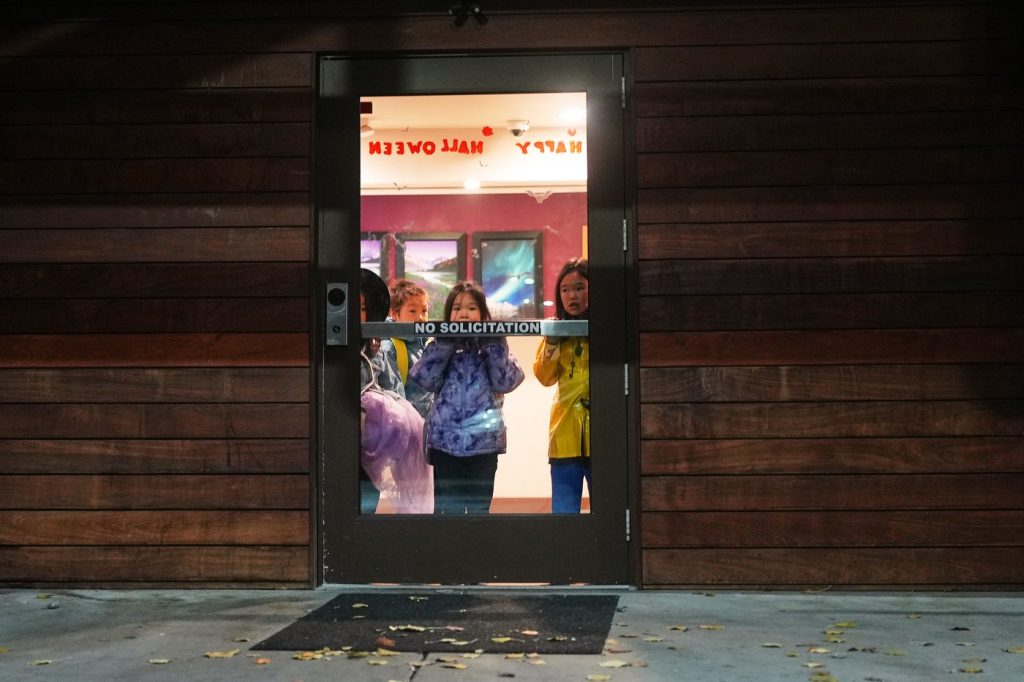ANCHORAGE, Alaska (AP) — In the wake of devastating flooding caused by ex-Typhoon Halong, an immersion program aimed at preserving the Yup'ik language has offered significant support to children displaced from their villages in western Alaska. Last month, the typhoon's impact led to severe damage in two Yup'ik communities along the Bering Sea, resulting in many residents being airlifted to Anchorage for safety and shelter.
Principal Darrell Berntsen has actively welcomed these young evacuees to College Gate Elementary School, which provides a Yup'ik language immersion curriculum. This program not only serves as an educational resource but also as a cultural refuge for children who have recently faced the challenges of displacement. The school has become a safe space where students can engage with their native language, fostering a sense of belonging in a time of uncertainty.
The emotional toll of the transition is apparent as displaced children join their new classmates. On October 30, 2025, children such as Lilly Loewen, a 10-year-old from Anchorage, were seen joking and interacting with their new classmates Rayann Martin and Ellyne Aliralria, both also 10 years old and recently displaced from Kipnuk. These interactions highlight the resilience of youth and the importance of community in overcoming adversity.
In the immersive learning environment at College Gate Elementary, educational practices are designed to blend cultural heritage with contemporary educational needs. During the school day, students engage in various activities, which include working on traditional crafts and studying Yup'ik language materials. A mirror affixed to a wall adorned with traditional crafts reflects the multifaceted experiences of the children as they navigate their educational journey amidst personal challenges.
One notable individual, Renee Avugiak, originally from Chefornak, Alaska, assists in leading her classroom through the hallways, emphasizing the significance of language preservation in their education. Avugiak's role underscores the dedication of educators in providing a nurturing environment for students that honors their heritage while facilitating learning. As students engage in lessons, they are not just learning a language but reconnecting with their cultural identity.
Another poignant moment captured on October 30 involved Rayann Martin, who, alongside Lilly Loewen, was actively participating in a Yup'ik language exercise. This engagement not only showcases their ongoing educational development but also illustrates the adaptation process for children coming from crisis situations. Additionally, Ellyne Aliralria was observed filling out worksheets in Yup'ik, clearly demonstrating the program's aim to maintain cultural relevance through education.
Visual symbols of Yup'ik culture are omnipresent in the school. For instance, the Pledge of Allegiance displayed in Yup'ik reinforces the importance of language within the educational framework. The presence of such symbols fosters a deeper connection to their cultural roots and establishes pride among the young learners.
The supportive environment at College Gate Elementary continues to serve as a lifeline for these children. As they gather in school hallways, teachers like Stephanie Wooten can be seen interacting with students like Ellyne and Rayann, emphasizing the nurturing relationships that are created in these challenging times. Despite the hardships brought on by the typhoon, the school's immersion program is becoming a crucial aspect of their recovery and adaptation.
The journey of these displaced children highlights the intersection of education, culture, and resilience in the face of adversity. While they navigate their new reality in Anchorage, the Yup'ik immersion program at College Gate Elementary stands as a testament to the strength of community and the enduring importance of cultural preservation.










